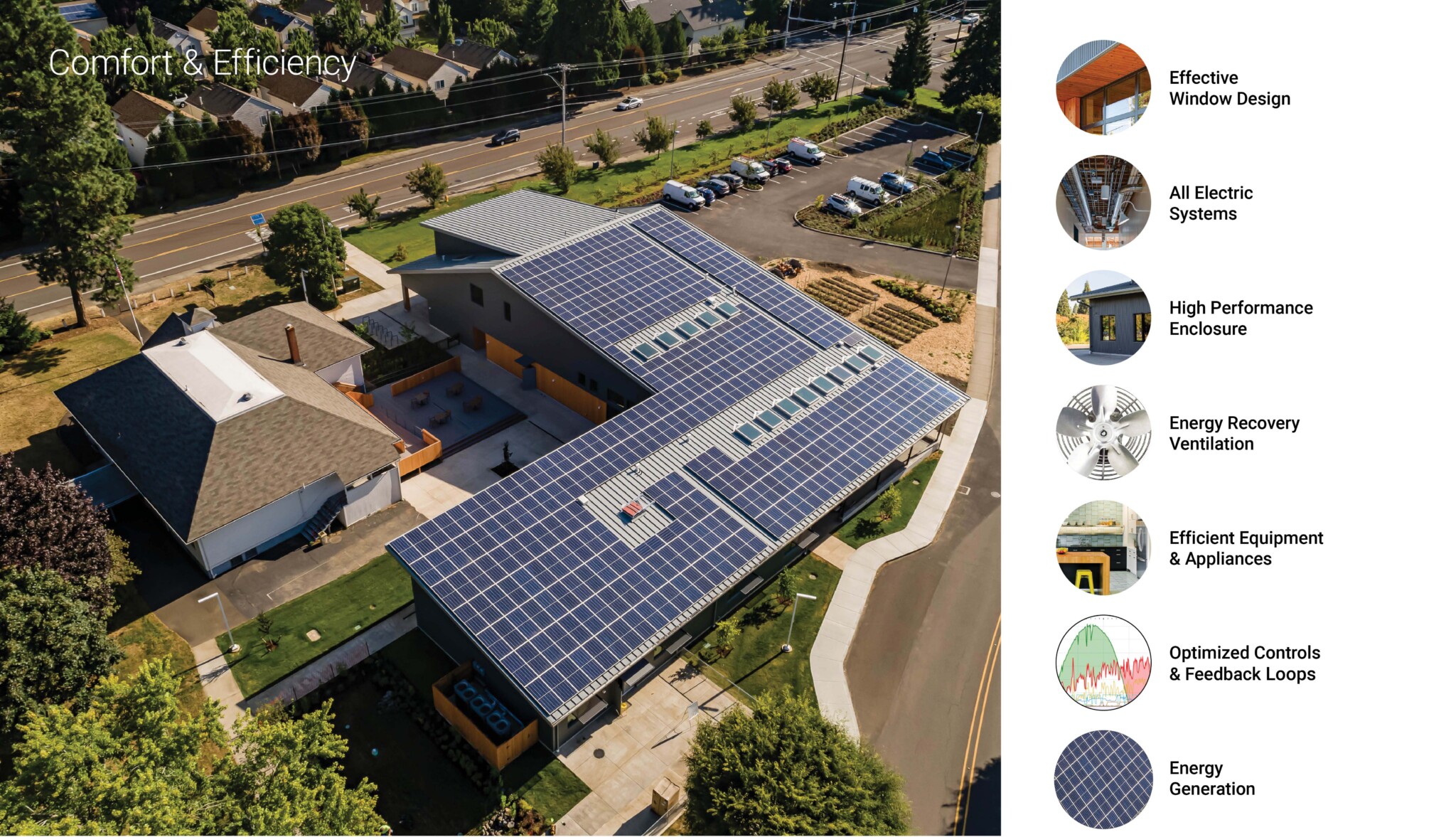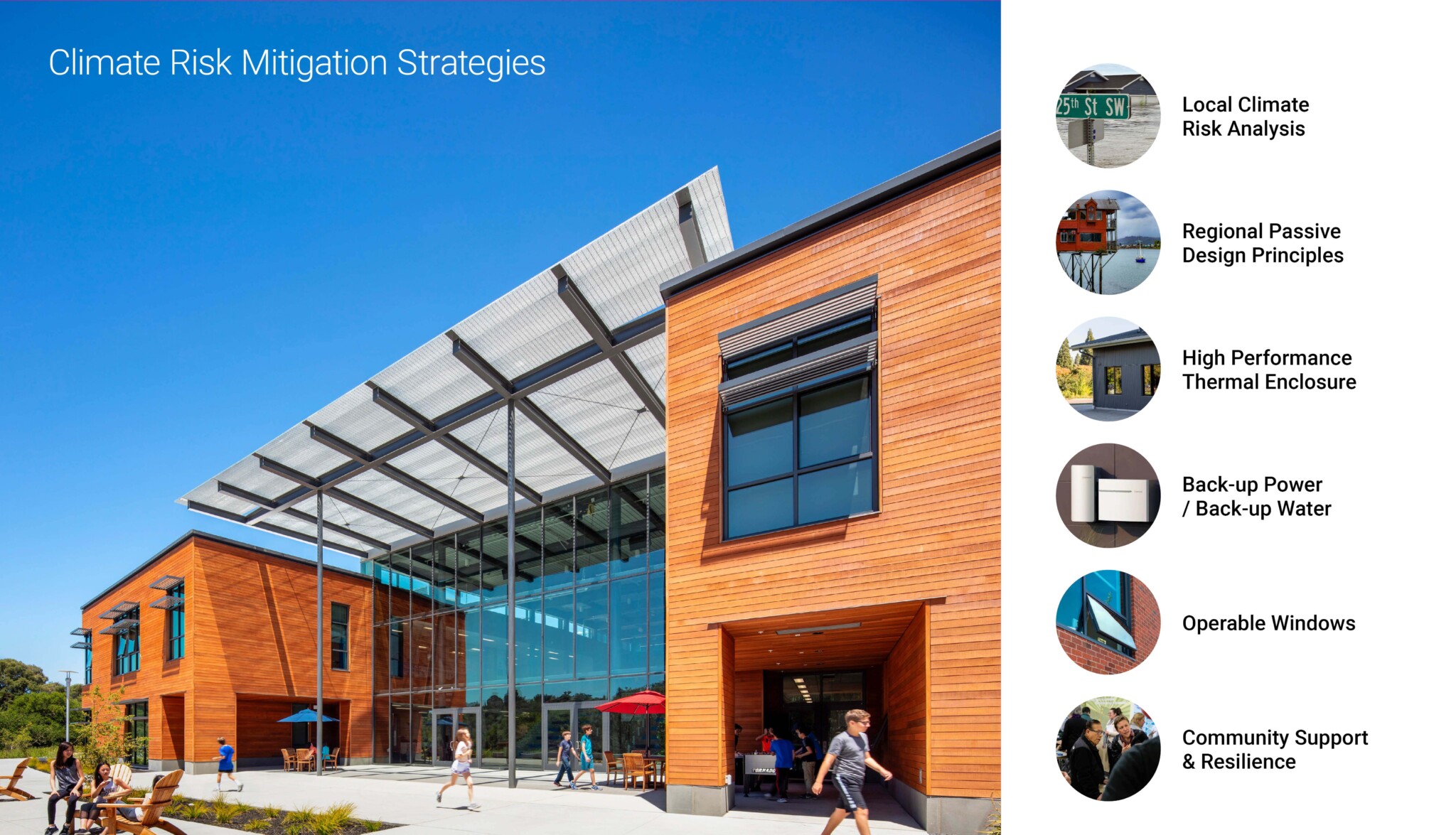Airtight Construction
Airtightness is critical to a building’s overall performance. By wrapping our buildings with an airtight enclosure, we minimize the influx of unwanted pollutants while retaining as much filtered and conditioned indoor air as possible. An airtight building is important to achieving our firmwide goals of climate, health, and equity.
- Airtight design allows the thermal enclosure to reduce HVAC loads and thus conserve energy from what is typically a building’s largest energy end-use, space conditioning. Insulation alone does not keep heat on the desired side of an enclosure; air leakage infiltration and exfiltration is a primary path for heat and moisture transfer through the building envelope.
- Airtight design allows us to have quality control over indoor air. The tighter a building, the higher percentage of ventilation air is intentionally introduced through a filtration system. A leaky building allows more outdoor air to bypass these filters, bringing untreated outdoor pollution into the indoor environment.
- Airtight design neutralizes outdoor conditions, allowing building systems, rather than happenstance, to determine indoor environmental air quality. Therefore, a tight building in a polluted area can be just as safe as a building in a pristine environment. The same cannot be said for a leaky building.
Airtightness is not “applied sustainability,” but the effective execution of technical design and construction strategies. The skills and efforts that lead to tight buildings add value for our clients and building users. Along with attention to detail and extensive field testing, we achieve very tight buildings through the following strategies:
- High-performance windows and curtain wall systems
- Collaborating with contractors to get the details right
- Using mock-ups to fine-tune the details and performance
- Frequent site visits by third-party reviewers to catch and correct installation mistakes

Indoor Air Quality
The average American spends 87% of their time indoors, 7% outdoors, and the remaining 6% in cars. This means that the quality of the built indoor environment is incredibly important to our health. Indoor air quality, derived from a building’s design and operations, is especially impactful on long-term health. Bora applies the following principles on every project, resulting in spaces with healthy air and thriving occupants.

Comfort & Efficiency
Energy is used in buildings to make occupants safe and comfortable. The goal of energy efficiency is important, but must be viewed through the lens of maximizing comfort. We approach our goal of creating healthy, equitable and efficient spaces by asking how we can optimize comfort while minimizing energy use

Building Performance Simulation
We design based on data, the only way to ensure our outcomes align with our intentions. Building performance simulation helps guide our work as we iteratively test our design solutions and work towards increasingly better outcomes. The studies we conduct in-house include daylight and glare analysis, energy and load modeling, life cycle analysis, and spatial thermal comfort.

Climate Risk
Climate change not only requires us to mitigate carbon emissions in our work, but also to anticipate and adapt to new climatic realities. Buildings in different regions are susceptible to different risks and require different mitigation strategies. We incorporate climate risk assessment into the early design phases of each project to ensure it continues to function as designed for decades into the future.

Passive First Approach
When designing for thermal comfort, there is an inherent tradeoff between active and passive systems. If the enclosure Is designed to code minimum standards, the mechanical system will need to be more robust and use more energy. Likewise, if the enclosure is improved, the mechanical system can be significantly scaled down. This more passive approach brings additional benefits, such as resilience and greater thermal comfort. We focus our design on what can be accomplished passively, and then only add active systems to supplement as needed. The outcome is typically better performance for a lower cost—and happier occupants.